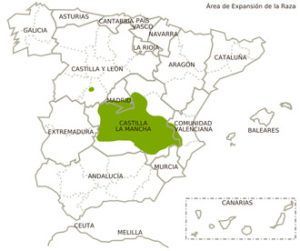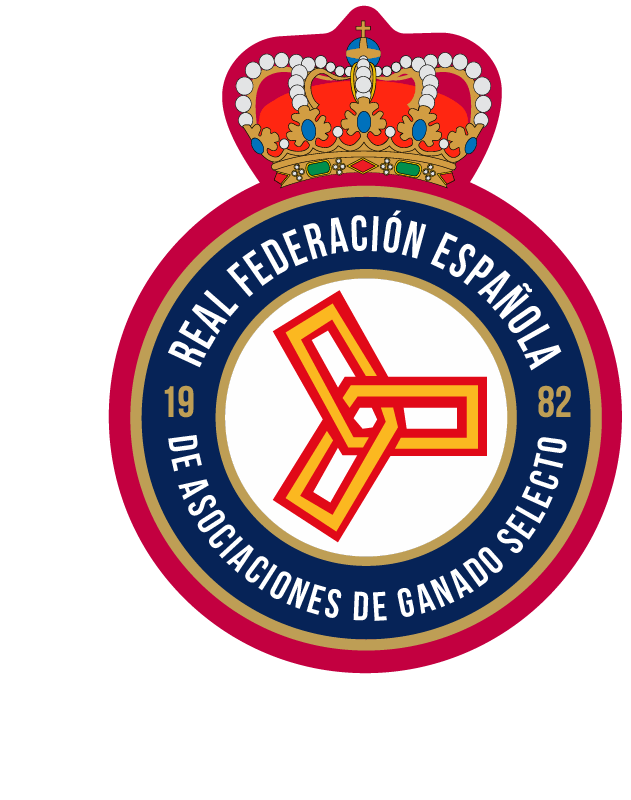GENERAL CHARACTERISTICS
The fleece is uniformly white, slight pigmentation being tolerated in females. The fleece is of fine wool, with a variable amount of medullated fibres.
PRODUCTION CHARACTERISTICS AND EXPLOITATION SYSTEMS
Milk production: The amount of milk produced per ewe per year has increased considerably over the last ten years (genetic improvement, management, feeding, etc.), reaching levels of up to 250 litres per ewe per year. The physical and chemical quality of the milk is very rich in its composition (fat and protein), obtaining a very high cheese yield (4-4.5 litres -> 1 kg of fresh cheese), which makes it the necessary and fundamental product for the transformation into Manchego cheese (protected by the Designation of Origin since 1985).
Meat production: Large producer of meat, both in terms of the number of lambs and their growth, development, carcass yield and carcass quality. The main type of lamb marketed is the paschal type (22-28 kg live weight), although the production of suckling lamb, with a live weight of 8-14 kg live weight, is now increasing. Both are covered by the Protected Geographical Indication for Manchego lamb (1996). The carcasses are lean to medium-fat, with meat of great tenderness and juiciness, with the beginnings of infiltration, intramuscular fat, providing a very pleasant characteristic bouquet.
GEOGRAPHICAL DISTRIBUTION

 Tell us about your characteristics and needs so that we can offer you the solution that best suits your context. Contact us if you have any clarifications or suggestions for products or services that you need.
Tell us about your characteristics and needs so that we can offer you the solution that best suits your context. Contact us if you have any clarifications or suggestions for products or services that you need.
Presupuesto total: 543.404,60 euros. Cofinanciado UE al 80% por el Fondo Europeo Agrícola de Desarrollo Rural- FEADER y al 20% por el MAPA. La Dirección General de Desarrollo Rural, Innovación y Formación Agroalimetnaria (DGDRIFA) es la autoridad de gestión encargada de la aplicación de la ayuda FEADER y nacional correspondiente.
https://ec.europa.eu/info/eu-
Creación de una base y estructura de comercialización e internacionalización de material genético de razas puras españolas mediante análisis de la situación actual y elaboración de plan estratégico para la exportación. El objetivo es desarrollar un análisis estratégico de la internacionalización y desarrollo de estructura y protocolos de comercialización del material genético según demanda y requisitos de países objetivos para las razas participantes del proyecto y para el conjunto de la cabaña ganadera España. Organismo responsable de contenido: miembros del GO EXPORTGEN.
 Tell us about your characteristics and needs so that we can offer you the solution that best suits your context. Contact us if you have any clarifications or suggestions for products or services that you need.
Tell us about your characteristics and needs so that we can offer you the solution that best suits your context. Contact us if you have any clarifications or suggestions for products or services that you need.Presupuesto total: 543.404,60 euros. Cofinanciado UE al 80% por el Fondo Europeo Agrícola de Desarrollo Rural- FEADER y al 20% por el MAPA. La Dirección General de Desarrollo Rural, Innovación y Formación Agroalimetnaria (DGDRIFA) es la autoridad de gestión encargada de la aplicación de la ayuda FEADER y nacional correspondiente.
https://ec.europa.eu/info/eu-
Creación de una base y estructura de comercialización e internacionalización de material genético de razas puras españolas mediante análisis de la situación actual y elaboración de plan estratégico para la exportación. El objetivo es desarrollar un análisis estratégico de la internacionalización y desarrollo de estructura y protocolos de comercialización del material genético según demanda y requisitos de países objetivos para las razas participantes del proyecto y para el conjunto de la cabaña ganadera España. Organismo responsable de contenido: miembros del GO EXPORTGEN.








